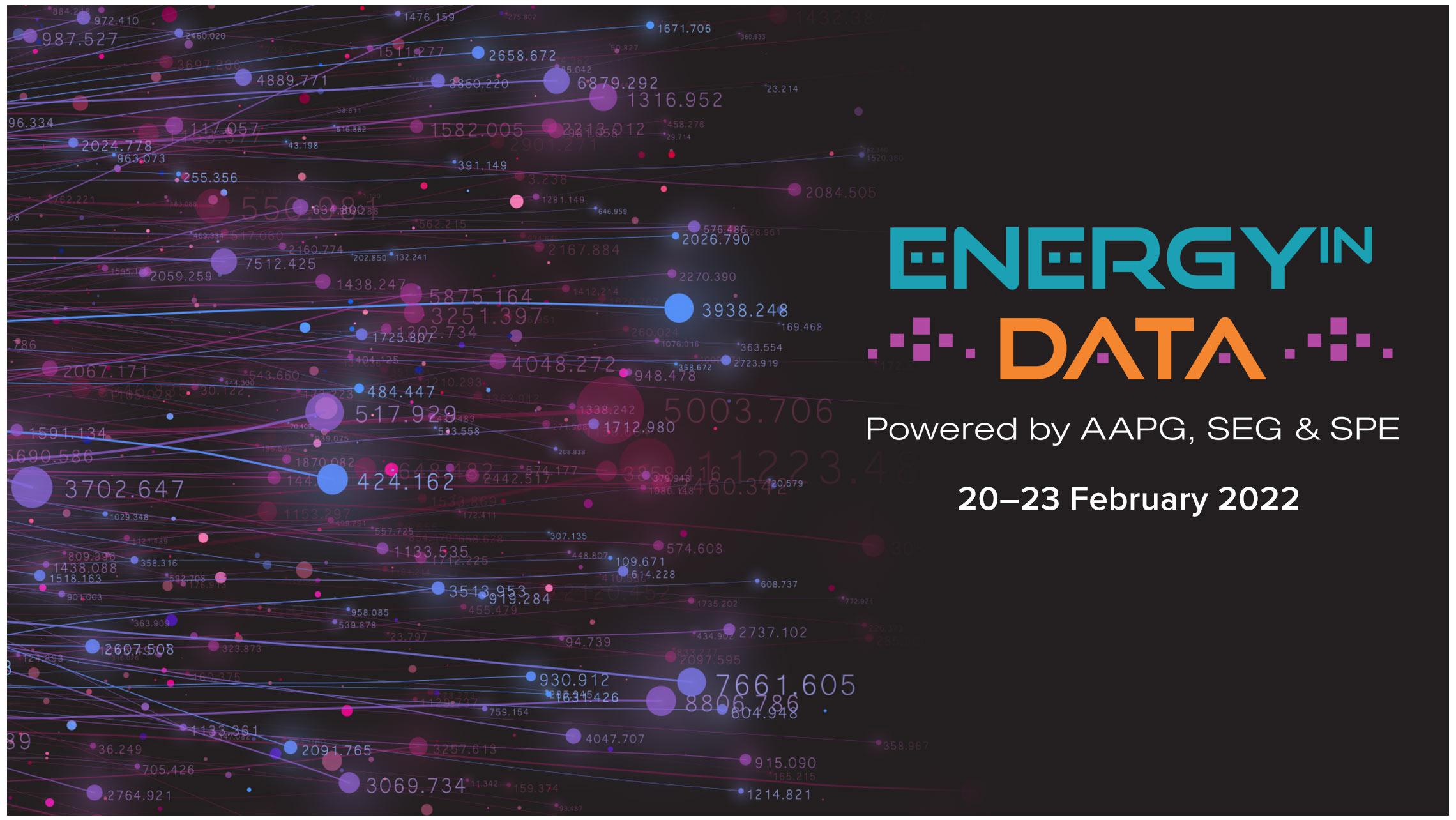AWS and Energy Competency Partner, QRI, Present Two Papers at the Energy in Data Conference.
Energy in Data • 02/21/2022
AWS and Energy Competency Partner, QRI, present two papers this year at the Energy in Data Conference in Austin, TX:
Monday, February 21 at 10:15 • Track 2: AI/ML O&G Applications
A Deep Learning Framework for Production Forecasting
Over the last decades conventional decline curve analysis has been a common method to forecast hydrocarbon well production. However, this technique is often faced with inefficiencies in reliably predicting hydrocarbon production. This is partially due to its inability to predict multiple phases in a single model, and to incorporate operational changes and subsurface fluid flow mechanisms.
In this paper, we propose a deep learning framework that addresses the limitations of traditional parametric DCA. This was achieved by using an Encoder-Decoder Long Short-Term Memory Networks architecture. The model combines three types of inputs consisting of time-variant information (i.e., historical production), static well features (e.g., geology and spacing parameters), or known-in-advance control variables (e.g., artificial lift type as a function of time), and the output is a multi-step forecasts for oil, gas, and water rates. We applied the model to a dataset of 213 gas wells from the Eagle Ford Basin, with the goal of predicting the gas and water rates. Production history ranges from 11 to 52 timesteps (mean 31) and is supplemented with 18 static features comprising geology, spacing, and operational attributes.
Our proposed framework demonstrated the ability to; 1) forecast future production with limited historical production, 2) predict production behavior under different control regimes and quantify the impact of future planned activities, 3) forecast multiple phases (oil, gas, and water) simultaneously with the same model (i.e., multi-target prediction).
The full abstract is now available through the SEG Library.
Tuesday, February 22 at 1PM • Track 2: AI/ML for Data Management
A Deep Learning Framework to Process Unstructured Drilling and Completion Reports
Over the recent years, we have witnessed advancements in digital transformation and advanced analytics in the oil and gas industry. Data from oil and gas operations have been key to fuel these advancements, being a channel to multiple asset workflows including evaluating drilling and completions operations. With the adoption of machine learning and artificial intelligence, the oil and gas industry is now able to apply different techniques for unstructured data retrieval and processing to gain actionable insights. This work presents a novel Deep Learning approach to process unstructured drilling and completion reports. This was achieved by correlating extracted drilling and completion keywords using a word embedding model, and numerical information in the daily reports such as depth, hole sizes, casing sizes, mud weight, weight on bit, and revolutions per minute retrieved via regular expressions. Also, a deep learning classifier was trained to label each activity description to understand drilling and completion phase, productive (P) or non-productive (NP) time, and (if applicable) the reason for non-productive time (NPT). The proposed methodology was applied on a ~100 well sample data set, comprising of ~40,000 activity descriptions and ~1,000,000 keywords/phrases. First, the numerical information (e.g., depth, hole size, casing size, mud weight, weight on bit, and revolutions per minute) was extracted from the activity descriptions. Independently, a group of drilling and completion engineers manually extracted this numerical information from a small set (~1,000) randomly drawn from all the activity descriptions. Based on the results, the proposed algorithm was able to extract numeral information with more than 95% accuracy. Also, the deep learning classifier achieved blind test accuracy of 91.3%, 92.1%, and 89.6% for the drilling/completion phase, P/NP, and NPT type, respectively. This intelligent processing of unstructured drilling and completions data allows for more than 100 times efficiency gain compared to the manual process, which when integrated with other data sources improves operational process, well design and resource allocation.
The full abstract is now available through the SEG Library.
